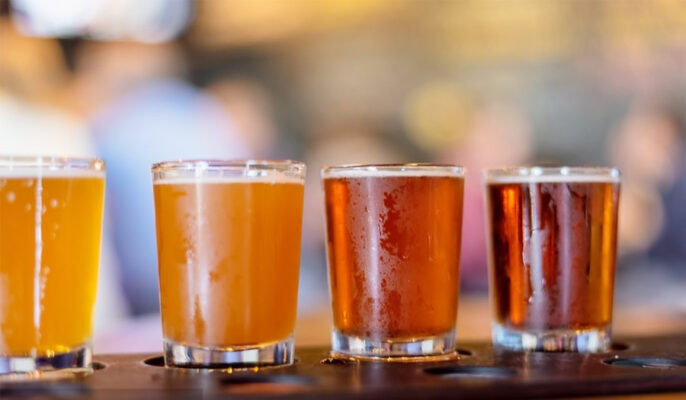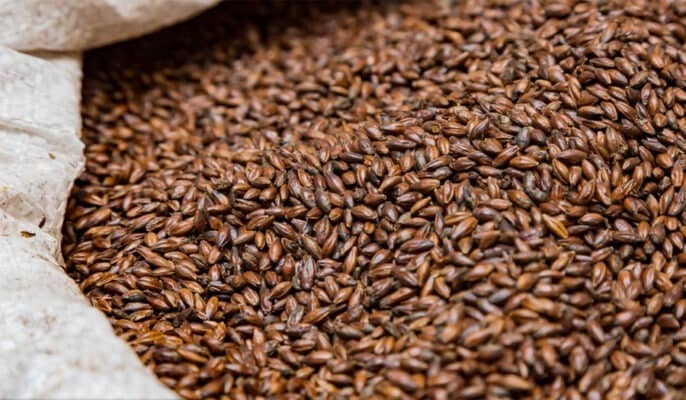Beer coloring is an important and often discussed topic for beer lovers and craft brewers alike. Color is an integral and important part of our food and beverages, and beer is no exception. The grain is by far the strongest coloring agent in beer, the grain is colored by melanin, a rust-red pigment that drives the color of the beer. In fact, very common these days are color flavor wheels, which show exactly the color of your beer based on factors such as the hops, yeast or malt used.
The grain used determines the color of the beer
What a lot of people don’t know is that all beers come in red. This is true on a basic molecular level, although the human eye may not always see all beer as red. This is because beer is made from starches found in grains. The grains are colored by a pigment called melanin, which gives it a rusty red color and is thus the largest coloring agent in all beers. Brewers often apply specific chemical processes to this color to make their beers stand out.
The malts chosen and the proportions they are used in each recipe determine the color of the beer.
Dark malts will give your beer a dark color.
With very light malts, the beer will often turn a darker shade as the color builds up, causing the total to darken. A dash of chocolate or roasted malt (non-caramel malt that’s roasted at high heat until it’s toasted black) can also add deeper color.

Color chemical reaction
Chemical reactions that occur during malting, mashing, and wort boiling also affect beer color. These include two chemical reactions that turn the grain from light yellow to dark black: the Maillard reaction and caramelization.
Maillard reaction
The reaction that happens when you start linking amino acids to sugars, usually caused by the introduction of heat. The resulting combination produces a variety of flavors and aromas, associated with deepening colour. In beer, these Maillard reactions are most manifested as toasty notes, but they are not unique. Omit hundreds of perceivable flavors can be produced in the process. This reaction usually occurs at lower temperatures (100-200°F), so time is an important factor.
Caramelization
Caramelization is simpler than the Maillard reaction. Caramelization is what happens when sugar is heated until it breaks down. Grains do not contain sugar, so heat is first used to convert the starches in the grains into sugars. Once this process is complete, the temperature can be raised even higher to break down the formed sugars. The longer the malt is caramelized, the darker it will be. All caramel malts also contain non-fermentable sugars, which add flavor but not potential alcohol.
Oxidation is one of the factors of coloring
Fruits such as bananas and apples start to brown when left out in the open for too long because of oxidation, as does beer. The behavior of oxygen interacting with beer. Oxygen is a key ingredient in the degradation of organic matter, and beer is no exception. Oxidation is something to keep in mind at all times, and for some brewers, oxygen is always working against them when it comes to getting the right beer color. For example, Crimson IPA is much redder in color than it should be, due to over-oxidation.
Beer darkens over time
As the beer ages, the color changes . As it ages, suspended particles in the beer (e.g. yeast, polyphenols) begin to fall to the bottom of the container. As a result, the remaining beer will reflect less light, and the beer will appear darker. Even in the absence of any other factors, aging can have an effect on the color of a beer.

Other Factors in Beer Coloring
Some of the key factors in the coloring of beer, such as the grain used, time, oxidation and certain chemical processes. There are several other important factors:
- Boil length
- PH value
- Yeast strains
- Hops
- Special ingredients
The longer the beer is boiled, the deeper the browning due to the Maillard reaction. When it comes to pH, the general rule of thumb is that the more acidic the mash, the lighter the color of the beer. This is due to the chemical properties of water. Hops are also important because they leave behind polyphenols and acids. It is the presence of these extra particles that creates cloudiness in the beer, which lightens the perceived color of the beer.
The color of the beer does not reflect the taste
When it comes to the effect color has on beer flavor. If the beer is dark because it contains roasted malt, you can expect notes of chocolate and coffee. Single-malt, copper-colored ales will have a pronounced biscuit and bread flavor, while lighter-colored ales will have more grain and crackle.
While the color of a beer can give the drinker some hints about the taste, there is no definitive rule. There’s no connection between beer color and alcohol content. While conventional wisdom holds that pale, pale beers are lower in alcohol, while darker beers are higher in alcohol (measured by ABV). But the truth is, you can brew a strong, double-digit ABV Belgian beer that is very pale golden and has a very high alcohol content.




